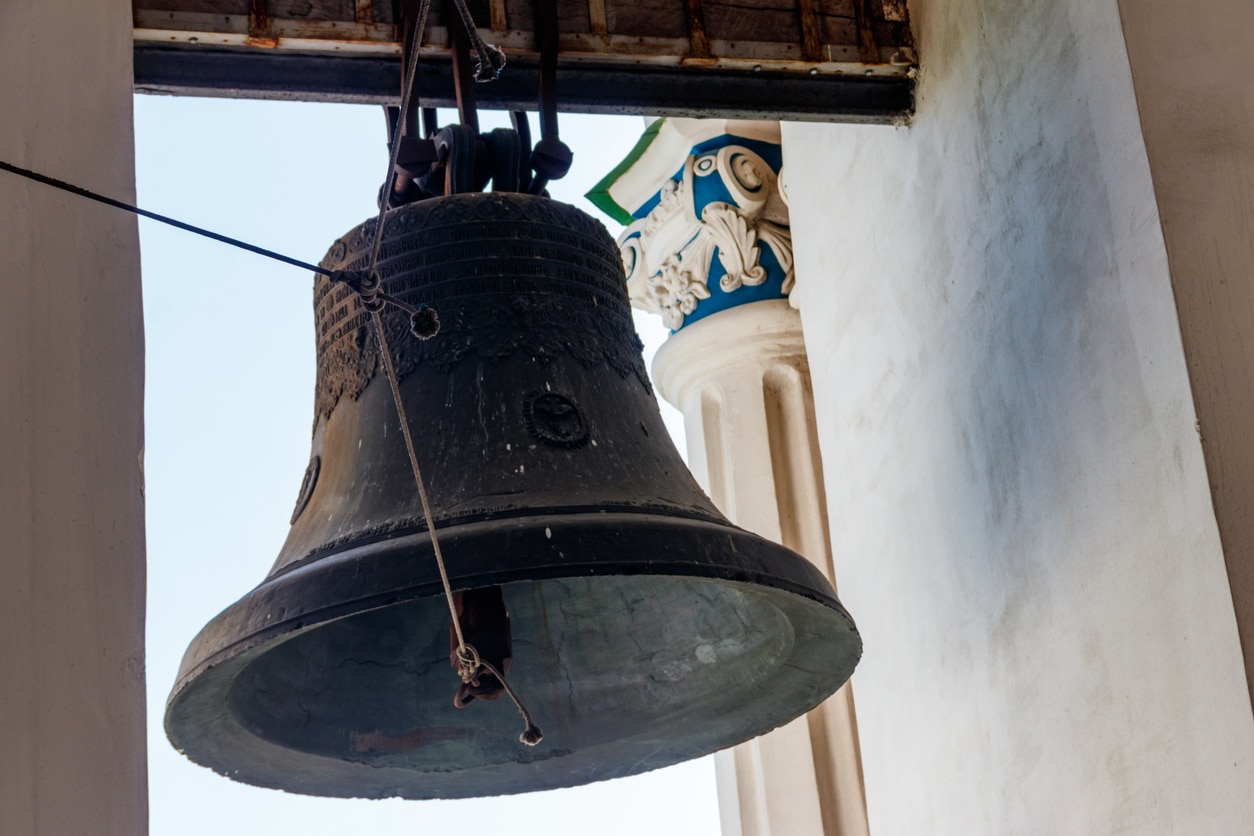Although Philadelphia is the home of the Liberty Bell and served as the site of sometimes raucous celebrations of the U.S. centennial in 1876, it also became a site for disputes over the degree to which a city could regulate the ringing of church bells.
Early uses of bells
In early America, at a time when many individuals lacked clocks and pocket watches and houses were often spread far apart, bells were frequently used not only to mark the time of day, but also to call assemblies, to mark weddings and funerals, and to sound alarms of fire, military attacks and other dangers. As cities became more densely populated and more filled with noises, the sound of such bells could awaken individuals who had to work night shifts, disrupt the sleep of individuals who were sick or recovering from injuries, increase nervous anxiety among nearby residents and add to the cacophony of city sounds.
Founded in 1847, St. Mark’s Protestant Episcopal Church, was located in an upper-end neighborhood on the 1600 block of Locust Street and was an example of gothic architecture. It was influenced by the Oxford Movement in England, which “sought to restore Roman Catholic theological and devotional principles to the Anglican Church” (Weiner 2014, p. 45). Although its original spire remained empty, the church decided in 1875 to order a set of bells from the Whitechapel Bell Factory in London, which had cast the original Liberty Bell. These were first rung on June 25, 1876. They were rung regularly for four services on Sunday, often ringing for as long as 30 minutes. The bells also rang twice on other days to announce daily services and on special civic and religious holidays.
Residents, some of whom had expressed concern even before the bells were installed, were divided in their reaction to the bells. Some residents considered the sounds to be melodious while others believed that they disturbed the peace and aggravated nervous disorders. At the time, cases where one owner’s property affected the rights of others, were generally adjudicated under laws related to public nuisances.
A case alleging negligence was accordingly brought before Judge John I. Clark Hare of the Philadelphia Court of Common Pleas in Philadelphia in 1877.
Church bells — A noisy nuisance or religious expression?
Two eminent Philadelphia attorneys, William Henry Rawle (for the plaintiffs) and George Washington Biddle (for the defendants), introduced reams of testimony. Such testimony brought to light conflict between norms of bell ringing in the city versus the county, questions over the effect of bell ringing on public health, the status of long-standing Protestant churches, the degree to which bell-ringing was connected to religious expression, and the appropriateness of comparing sounds emanating from churches to the noises that were emitted by factories, by street cars, by railroads, and other conveyances, that were generally considered to be sounds of progress.
At a time before the guarantees of the First Amendment related to the free exercise of religion and freedom of speech had been applied to the states via the due process clause of the 14th Amendment, Judge Hare narrowed his focus to nuisance laws and property rights.
Concluding that the bells were too loud, he temporarily enjoined the ringing of the bells in hopes that a compromise might be reached. The Pennsylvania Supreme Court subsequently ruled that the church could ring its bells for up to two minutes three times on Sunday (excluding its earliest service), later modifying this decision so as to permit additional ringing on Christian and American holidays. A scholar has thus noted that, as it proceeded through the courts, the case “became more and more concerned with when bells should properly be rung, that is, when the church should properly make itself heard, rather than the tone and volume of this particular set of bells” (Weiner, 70). There were similar disputes related to the ringing of church bells in other cities.
Supreme Court later takes up cases involving regulation of noise
The situation bears some resemblance to modern decisions accepting reasonable “time, place, and manner” restrictions on speech while generally striking down laws based on the content of such speech or the identity of its speakers. The Supreme Court has not always been consistent in deciding whether to uphold laws limiting the use of sound trucks. Compare Kovac v. Cooper (1949), upholding such a law, to the court’s decision in Saia v. New York (1948), limiting the discretion of officials in enforcing such laws.
In assessing the constitutionality of a national law restricting polygamy, the U.S. Supreme Court would rule in Reynolds v. United States (1879) that, although it provided a near unlimited right of freedom of beliefs, the free exercise clause did not give religious entities the right to engage in behavior that it believed was detrimental to others.
After restoring its bell tower in 2000, St. Mark’s has emerged as one of the premier change-ringing (based on mathematical patterns) programs within the U.S. with contemporary practice sessions being muffled in an enclosed chamber (Kyrikadis 2015).
John R. Vile is a professor of political science and dean of the Honors College at Middle Tennessee State University.

